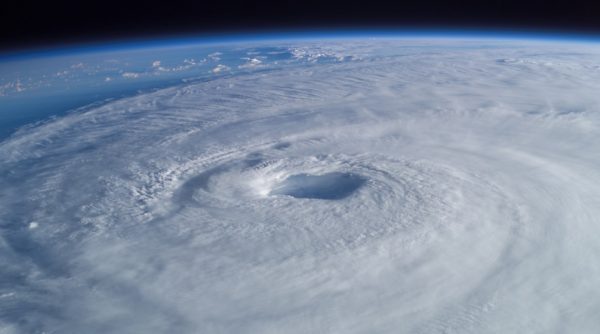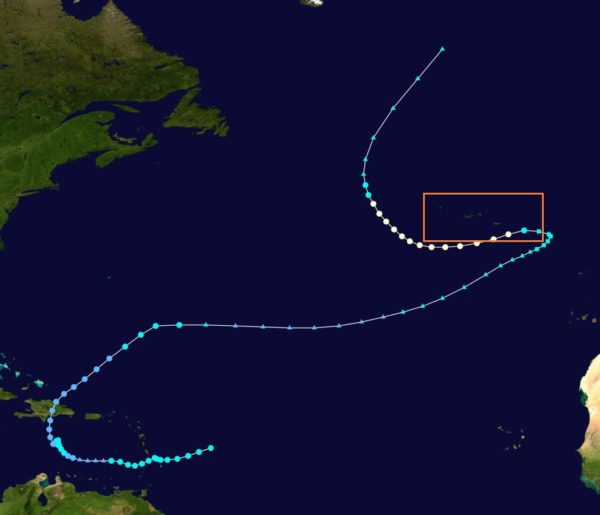
September 1970, Azores. Now that I have moved my way up from the Stewards Department to administrative jobs, a new highlight of my life on board is my initiation into the routines and rituals of sea watches.
At sea, the ship’s company, except stewards and engineers, stands sea watches. There are six watch teams who each stand 4 hours in a 24 hour rotation. I have the good fortune of being assigned to watch 6, headed by Diana Hubbard as conning officer (the person who conducts the vessel during the watch), who is very capable, and insistent on proper training and strict performance of her crew.
By the time late summer rolls around, I’ve already been promoted to Helmsman, to my delight. Yes, I am entrusted with steering the 320 foot long vessel and maintaining her course, using the big old wooden wheel with the burnished spokes from all the seamen who have laid their hands upon it for decades before me.
The Apollo goes to sea once a week or two, to move from port to port. The distances are often short, usually overnight, and most often along the coast. In keeping with the ship’s security protocols, our next destination is only made known to the crew after we leave port, so after we cast off from Setubal in Portugal on September 13, it is announced that we are taking a serious offshore voyage, heading for the Azores, a Portuguese owned tiny archipelago some 900 miles due west of the mainland. The nearly three day trip is uneventful although tiring, since we must in theory maintain all post duties in addition to the sea watches and the loss of sleep they entail. We make landfall in Ponta Delgada on the main island of São Miguel.
I have been since the spring engaged in a romantic relationship with Leon Steinberg, who is the Supercargo for the ship, directly under the Captain. Known to all as Steiny, he’s a gentle giant with a tentative smile and a heart of gold, who speaks deliberately and knows far more than he lets on, at least to me. So one day on liberty the two of us get to explore the little town with its quaint whitewashed church, and its roads and public squares covered with the round black volcanic stones in the Portuguese style familiar to us.
I soon come to learn that the people of Azores have practiced whale hunting for hundreds of years. There are lookouts in refuges up on the hills behind the town, who scan the horizon for whale spouting activity, and then in the old days would light a smoke fire to alert the villagers to take to sea – although more recently this was replaced by rockets, and later still by radios.
Steiny, bless his heart, surprises me with a unique gift: an exquisite necklace with large oval beads made entirely of polished whale teeth ivory. Even the clasp consists of an ivory bead into which have been carved the threads of a tiny screw.

As we continue our grand tour of the archipelago, we visit the islands of Terceira, Faial and Santa Maria. Already the weather is rough for the short passage between Faial and Santa Maria, as we dock into the small port at the southwest corner of the island. But it soon goes from bad to worse. By October 18, the ship is banging against the dock due to wave action, lines are snapping , and the Commodore orders the ship out to sea to ride out the weather.
The storm lasts for nearly two full days, during which the ship steams along the coast, protected somewhat from the wind and waves by the island, sailing in figure eight loops so as to attack the waves diagonally, the most stable angle. Unfortunately that means the ship is simultaneously pitching bow to stern and rolling side to side, in a sickening corkscrew motion which, well, makes the crew sick.
My turns at the helm are challenging, to say the least. It’s barely manageable to keep a course with the waves off our bow, as the vessel is “shipping green” as the nautical folks would say, meaning that the entire forward deck and bow area, barely visible below through the assault of rain and spray on the windows of the bridge, plunges deep into the solid sea, checks its forward motion for a time, with the stern lifting clear out of the water and the propellers thumping in thin air, then ever so slowly, while I wait with suspended breath, labors to come back up as the weight of tons of angry sea water slowly empties off her sides. On the return leg of the loop, with the wave trains behind us, the ship surfs madly off the crests and slides down into the deep troughs, pushed way off course and onto the back of the next mountain of water at every wave, and maintaining course is near impossible.
But the really scary part is when we come to the end of our loop and must turn around to reverse direction, in order to stay protected behind the island. The conning officer barks the order to come about over the screaming wind, and I must execute the 180 degree turn slowly and gradually, making a wide enough turn to prevent the ship from leaning over too hard. That requires a period of one or two minutes where we must take the waves fully side on, rolling so deeply from side to side that one wonders at the end of every swing whether the ship will keep going and capsize. She somehow regains her footing and redresses herself, only to come to center and swing violently in the opposite direction. I am not seasick per se, just sick with fear that the old gal will go down with all hands, with me at the helm.
On my second watch of the storm, the night is pitch black, and the bridge is dark and silent as the watch members huddle wherever they find a corner to wedge into or a handhold to grab onto, hoping they will not be called upon. As for me, feet planted wide apart on the wet floor, I’m holding on to my helm for dear life as the boat lurches unpredictably. Eventually I get the hang of it. It’s impossible to steer the ship by the faint red glow of the numbers on the compass in front of me, and it’s impossible to see anything outside, sky and ocean merging into one terrifying, howling blackness. In the absence of visual information, I soon learn to steer with my feet, that is to say by gravity. I concentrate on the shifts of my weight as I feel the ship climbing every wave and starting to change its angle, and I respond by leaning on my helm in the opposite direction, to meet the ship and dampen her motion.
Two days later, when the winds abate and the sea state settles down, we sail back the fifty miles north to Ponta Delgada, fuel up, and leave the Azores never to return. I am a much better sailor after this trial by hurricane, but never again will I be so casual about the capriciousness and power of the ocean.
As for Steiny, we soon end our relationship when I move up to the Prom Deck for my new job as a Commodore Staff Aide. He later married a fellow auditor, a much better partner for him, and moved on up to Class XII, the highest level of auditor there is, only to later leave the Sea Org.
But I kept the ivory necklace he gave me, even though the hunting of whales soon became prohibited and the wearing of ivory ornaments no longer acceptable. I still have it to this day. It has followed me around for over fifty years now, like the memories of my six years on the Apollo, which I can’t seem to let go of either.
Many eyewitnesses have come forward to tell the story of this Azores storm, most notably Janis Gillham Grady in her book: Commodore’s Messenger: A Child Adrift in the Scientology Sea Organization. But beyond the legend, I’ve always wanted to put this harrowing experience into proper perspective. Was this just an average storm, or an actual hurricane? And how was it that we were caught in it? Was it just a case of wrong place, wrong time, or was there negligence involved? So I set out to piece the facts together.
The storm itself recorded a maximum 1-minute sustained winds of 85 mph, which does classify it as a Category one hurricane (winds of 74 to 95 mph). It is known as the 1970 Caribbean-Azores hurricane and it boasts its own Wikipedia page. It was long lasting, from 22 September to 20 October, and it had a very odd path, shown in this graphic, with the Azores shown in the box.

After dumping torrential rains on Puerto Rico as a tropical storm without high winds, it made its way clear across the Atlantic as a mild depression. But then, just south-east of the Azores, it collided with a high pressure area which forced it to reverse course 180 degrees. By the time it tore westward just south of the Azores, it had indeed strengthened to a hurricane, and this is where the maximum wind was recorded. Just past the Azores, the system curved North and dissipated.
This path answers the first question – yes it was a hurricane, although just barely so, when it skidded along the south coast of the Azores. It also answers in part the second question of how did the Apollo get caught in it. The first obvious observation is that the Apollo had the misfortune of being stationed in Santa Maria, the southernmost island of the archipelago, located some 60 miles south of the rest of the chain, and thus the closest by far to the path of the incoming storm system. The second factor is that the intensification was not easily predictable as the system was only a weak depression all the way across the Atlantic for the previous week. In those days, only the barometer and the ship’s long range weather reports, presumably from the BBC, would have broadcast information about this system. And of course none of the modern Hurricane Centers with their sophisticated supercomputer models were available to the mariner. To that extent, the Commodore was not at fault.
Janis Gillham Grady, who accompanied the Commodore to the Bridge and ran messages during the storm, had this to say about his mindset at the time:
While in the Azores on October 12, [on the island of Faial – LK] LRH noted the barometer was the lowest he had ever seen at 29.27 [actually 29.16, per Orders of the Day], but it had begun to rise steadily and did not pump (go up and down). Five days later, [on or about October 17] he commented that the barometer in the Azores was known to go from very low to very high, and noted that hurricanes usually [emphasis ours] miss the islands, but if they did hit, they would only reach 60 to 86 mph. He noted we were sitting in a “moving depression” that was not moving, and we were safe as only “moderate to fresh winds gusting strong and ‘rain’ were in the forecast for Santa Maria” [meaning winds of 13-18 mph to 19-24 mph, gusting to 25-31 mph, per the standard wind scale].
This comment was made the day before the storm hit. It’s clear that the Commodore was watching the barometer and the weather reports, the only two reliable weather data sources available to him, and that he had studied the bigger picture of the weather patterns in the area, available from professional mariner references. But it is fair to surmise that he was concerned despite his reassuring comments, as well he should have been. Recall that Grady reports that the ship already had already run into some rough weather while sailing from Faial to Santa Maria on October 15-16.
We’ve established that the depression, when it did get moving again, took a 180-degree turn toward the islands, rapidly intensified to hurricane strength, and headed straight under the island of Santa Maria. That was evidently a surprise even to the local weather authorities.
Just how violent was the storm at the ship’s exact location? On October 19, LRH commented:
This quiet harbor where we are nicely berthed seems awfully tranquil after the gale. She is a very staunch ship, this one. We must take care of her, a real friend.
And per Janis:
The day after the storm subsided, the weather report on the news from the ship’s radio reported the wind velocity had only been fifty-four mph. The Commodore commented, “The meteorologist wasn’t on our bridge.” [ italics in original]
Technically, winds of 47-54 mph are classified as a severe gale, so he was not incorrect in calling it a gale. And it’s plausible that the velocity recorded on shore may well have been lower than that experienced by the ship at sea, as pointed out by dear Commodore. Hurricane classification begins at 73 mph. But lest we allow ourselves a sigh of relief that the conditions we experienced on board were not those of a “real” hurricane, consider this: standard tables of sea conditions indicate that a 55 mph wind which blows unobstructed for 24 hours will generate waves of 45 feet, more if the wind blows for longer. Call it what you will, this was a serious weather event.
But let’s zoom out to the bigger picture. Hurricane season in the North Atlantic only ends on November 30, so there was always a risk associated with a September–October transit, as pointed out even by LRH in saying the hurricanes usually missed the islands. So why was this 900-mile passage offshore attempted on those dates, knowing that the ship’s previous operations were confined either to the Mediterranean or to coastal Atlantic ports? Janis Grady’s book gives a possible answer:
In early September 1970, we received a report of cholera spreading in the eastern Mediterranean….Captain Bill had to change travel plans to prevent any risks of our ship arriving in a port with cholera and ending up in quarantine. He proposed we leave the Mediterranean area and head for the Azores. September is known to be the best weather of the year there, which was the time we arrived. Hurricanes still form in the Atlantic, but during September and October they don’t usually [emphasis added] reach the islands.
There’s that word usually again. This decision was a calculated risk, as both staying and leaving the coastal areas carried risks. But in evaluating the decision to sail a third of the way clear across the North Atlantic, one has to ask: was the ship fit for such a voyage? What do we know about that?
Built in 1936, the ship was already 34 years old in 1970. She had undergone a dry dock in Casablanca the previous year to repair a bent propeller, so it’s safe to assume that her bottom hull made of riveted steel plates had been inspected and found to be sound. So far so good. But then there is the matter of safety equipment. The ship’s complement, which had been 82 when I arrived in October 1969, had by this time swelled considerably due to the arrival of extra recruits and a large contingent of OEC/FEBC students. Were there enough lifeboats and liferafts to accommodate the entire ship’s company? That is unclear at the moment.
But there can be no doubt about the condition of the available equipment. In the January 1971–May 1971 chapter of her second book: Commodore’s Messenger: Riding out the Storms with L. Ron Hubbard, Janis Gillham Grady tells this story:
… the Commodore as the Captain ordered everyone on board to be part of lifeboat drills so they could learn what to do in an emergency situation, including how to row the boats. The lowering part of the drill went smoothly until the lifeboats were released from the davits and were on their own in the water. Only Lifeboat Number 8, the only boat with a motor, and Lifeboat Number 3 which was made of metal did not take on water. Though the remaining six took on water, they did not sink because of the hollow metal canisters located under the wooden seats (that are supposed to have been filled with fresh water).
Janis goes on to describe the program that was instituted to re-caulk the lifeboats and stock up their required emergency supplies of food and water. But the timing of this 1971 incident is proof positive that the ship had not been ready to take to sea back in October of 1970.
The requirements of the Safety of Life at Sea (SOLAS) international convention, which was instituted way back in 1914 in response to the Titanic disaster, were evaded by LRH, through the dubious scheme of registering the ship as a private yacht, and registering her under Panamanian flag, thus avoiding inspections.
And zooming out to the biggest picture of all, one must point out that the original purpose of the ship was to serve as a home for LRH, who had been banished from England and was subjected to legal and tax troubles in the USA. That remained the ship’s first purpose and the reason for its secrecy, even as additional Scientology management and training functions were added to the vessel’s activities. But this at-home-on-the-seas scheme backfired when the ship was refused entry into various countries, and by mid 1970, in effect found itself restricted to Morocco, and to Portugal and its territories.
The inescapable conclusion is that L. Ron Hubbard put his crew and his ship at risk to protect his own personal interests and those of his Scientology operations. And that should a less fortunate outcome have occurred, involving loss to property and/or threat to life and limb, there is little doubt in my mind that any legitimate maritime body would have concluded that gross negligence was involved.
— Louise Shekter
Feb 17, 2022: The proposition that threatened to upend my Scientology billion-year commitment
Feb 2, 2022: Another crucial Scientology eyewitness coming forward, starting today at the Bunker
——————–
Sign up for a daily email when we post a new story on Scientology.
Did you know you can get an email every morning when we post our daily Scientology story? We know some of the folks who come to the Underground Bunker aren’t here to talk about the politics of the day, and that’s why we created a daily politics feature over at our other blog, The Lowdown, and we ask readers to take their political discussions over there. And if you drop us a line at tonyo94 AT gmail, we’ll put you on the list so you get a morning reminder that a new Scientology story has been posted — and only for our Scientology stories.
——————–
“The reactive bank is a thing. It’s got sort of mushy looking electronic masses and it’s got pictures and locks and other things associated with this, it is a thing. Well, the physical universe and the remaining dynamics, of course, are themselves a thing. And that’s what we mean when we say our universe and the other fellow’s universe and everybody’s universe. There were three universes, if you can remember rightly. Well, that apparently is very true, there are apparently three universes, but we were speaking of the reactive bank as meaning one of those universes where, as a matter of fact, that’s a little bit of a curve in the line. It turns out that there was his universe, you know, his brick walls, and we’re not sure right now whether or not they’re his brick walls and everybody’s brick walls or only his brick walls, or exactly what’s the status of these brick walls, because we’re right up a bunch, right up against the ability to disintegrate matter, all these various phenomena that — a yogi has been known as a good yogi if he could, you know, something or other, if he could levitate, you know, you’ve heard all these tricks and nonsense pieces and that sort of thing. Kid game stuff. This is the level you’re looking at. You see?” — L. Ron Hubbard, February 23, 1965
——————–
“RECRUITS: We appreciate all the new recruits. You are very valuable to us. It permits older hands to move up. In your turn if you do a good job, you will also be moving up in your time. You are expected to do the job assigned well and raise its stats. You are expected to complete your AB, SS I, SS II and Mission School during your study time, which should be about 2.5 hours a day during one or another of your study periods.” — The Commodore, February 23, 1971
——————–
“I may wind up doing OT 9 in Reno with Rey Robles. I haven’t decided yet. Also, keep in mind that in Marty Rathbun’s 1st book, he recommended that any OT 7 who wants to do more can, on their own, discover for themselves new levels of awareness.”
——————–
1997: Jeff Jacobsen and his family came under additional harassment this week, with a visit from a Scientology private investigator and two pickets. “As I type this, Eugene Ingram, Scientology private investigator, is in South Dakota visiting my father’s business establishments, asking questions about me. It is a written practice of the church to noisily investigate someone that they are upset at. I was warning my neighbors that there might be private investigators hanging around the area again. One neighbor then told me that 2 women were picketing my house a few nights ago about 9:30pm. The neighbors told the women to leave or they’d call the police, and they left. The Scottsdale police told me that there is a law against picketing in a residential area here. Tonight as every Friday night I went to my dj’ing job at the All Singles Dances. I went out to see about 20 or so people walking along the hotel property next to a busy major street (speed limit there about 45 mph). I remember 2 signs; one said ‘Jacobsen sued his family!’ and another said ‘Jacobsen sells XXX rated videos.’ I asked the guy holding the first sign what that meant since I had never sued anyone in my life. He said ‘you’ll have to ask that guy’ pointing up ahead to someone or other. I guess he didn’t even know what his own sign was about! My father has video rental stores in South Dakota, one of which won an award for best store in the state. He does rent x-rated videos, as well as Disney and everything else in between. Do you see what they’re doing? Rather than address what is on that page, they go after my family! Can you think of anything more despicable? I heard that after about 45 minutes of picketing the hotel called the police. The police told the picketers they were interfering with the hotel driveway (they had been marching right through the entryway) and also were distracting traffic and setting up a situation where someone driving by would likely be rear-ended while trying to read the signs. So the picketers left.”
——————–
“‘Ness is More.’ It’s Hubbard’s version of his favorite book ‘1984″ ‘Reduce the language down to its most base level and you can control what people think and it also separates them from the rest of society. Hubbard was already fairly knowledgeable about mind control techniques and hypnotism before he wrote Dianetics, so I don’t know why anyone would think his specific control techniques were by accident.”
——————–
Full Court Press: What we’re watching at the Underground Bunker
Criminal prosecutions:
— Danny Masterson charged for raping three women: Next pretrial conference May 31. Trial scheduled for August 29.
— ‘Lafayette Ronald Hubbard’ (a/k/a Justin Craig), aggravated assault, plus drug charges: Last hearing was on January 18, referred to grand jury.
— Jay and Jeff Spina, Medicare fraud: Jay sentenced to 9 years in prison. Jeff’s sentencing to be scheduled.
— Hanan and Rizza Islam and other family members, Medi-Cal fraud: Pretrial conference March 25 in Los Angeles
— David Gentile, GPB Capital, fraud: Next pretrial conference set for April 8.
— Joseph ‘Ben’ Barton, Medicare fraud: Pleaded guilty, awaiting sentencing.
— Yanti Mike Greene, Scientology private eye accused of contempt of court: Hearing held on February 15, awaiting ruling.
Civil litigation:
— Luis and Rocio Garcia v. Scientology: Eleventh Circuit affirmed ruling granting Scientology’s motion for arbitration. Garcias considering next move.
— Valerie Haney v. Scientology: Forced to ‘religious arbitration.’ Valerie asks for March 15 hearing on motion for reconsideration.
— Chrissie Bixler et al. v. Scientology and Danny Masterson: Appellate court removes requirement of arbitration on January 19, case remanded back to Superior Court. Scientology has said it will file an anti-SLAPP motion.
— Brian Statler Sr v. City of Inglewood: Third amended complaint filed, trial set for June 28.
— Author Steve Cannane defamation trial: Trial concluded, Cannane victorious, awarded court costs. Appeal hearing held Aug 23-27. Awaiting a ruling.
— Chiropractors Steve Peyroux and Brent Detelich, stem cell fraud: Lawsuit filed by the FTC and state of Georgia in August, now in discovery phase.
——————–
 THE PROSECUTION OF DANNY MASTERSON
THE PROSECUTION OF DANNY MASTERSON
We first broke the news of the LAPD’s investigation of Scientology celebrity Danny Masterson on rape allegations in 2017, and we’ve been covering the story every step of the way since then. At this page we’ve collected our most important links, including our four days in Los Angeles covering the preliminary hearing and its ruling, which has Danny facing trial and the potential sentence of 45 years to life in prison.
After the success of their double-Emmy-winning, three-season A&E series ‘Scientology and the Aftermath,’ Leah Remini and Mike Rinder continue the conversation on their podcast, ‘Scientology: Fair Game.’ We’ve created a landing page where you can hear all of the episodes so far.
 LEAH REMINI: SCIENTOLOGY AND THE AFTERMATH
LEAH REMINI: SCIENTOLOGY AND THE AFTERMATH
An episode-by-episode guide to Leah Remini’s three-season, double-Emmy winning series that changed everything for Scientology watching. Originally aired from 2016 to 2019 on the A&E network, and now on Netflix.
 SCIENTOLOGY’S CELEBRITIES, from A to Z
SCIENTOLOGY’S CELEBRITIES, from A to Z
Find your favorite Hubbardite celeb at this index page — or suggest someone to add to the list!
Other links: SCIENTOLOGY BLACK OPS: Tom Cruise and dirty tricks. Scientology’s Ideal Orgs, from one end of the planet to the other. Scientology’s sneaky front groups, spreading the good news about L. Ron Hubbard while pretending to benefit society. Scientology Lit: Books reviewed or excerpted in a weekly series. How many have you read?
——————–
THE WHOLE TRACK
[ONE year ago] Gary Beeny, 1949-2020: Scientology figure in notorious takeover of anti-cult group
[TWO years ago] For once Scientology gives up on Ideal Org, settles for a fancy ‘mission’ instead
[THREE years ago] Leah Remini pays for vexing Tom Cruise with Scientology’s ‘Truth Rundown’
[FOUR years ago] Laura DeCrescenzo fires back at Scientology’s desperate new federal court gambit
[FIVE years ago] Scientology’s Celebrity Whisperer: An inside account of life in the fame-obsessed church
[SIX years ago] Scientology tried to suppress this video, and that’s why you’re seeing it here today
[SEVEN years ago] Scientology Australia spills its guts, and you can thank Bryan Seymour and Nick Xenophon
[EIGHT years ago] Five things to watch for in today’s first Scientology wedding in the UK
[NINE years ago] Scientology Mythbusting with Jon Atack: Fair Game!
[TEN years ago] Scientology Demands the Right to Employ Slaves in Australia While Getting Puff Pieces in DC, Florida
——————–
Bernie Headley (1952-2019) did not see his daughter Stephanie in his final 5,667 days.
Valerie Haney has not seen her mother Lynne in 2,584 days.
Katrina Reyes has not seen her mother Yelena in 3,089 days
Sylvia Wagner DeWall has not seen her brother Randy in 2,609 days.
Brian Sheen has not seen his grandson Leo in 1,629 days.
Geoff Levin has not seen his son Collin and daughter Savannah in 1,520 days.
Christie Collbran has not seen her mother Liz King in 4,827 days.
Clarissa Adams has not seen her parents Walter and Irmin Huber in 2,695 days.
Carol Nyburg has not seen her daughter Nancy in 3,469 days.
Doug Kramer has not seen his parents Linda and Norm in 1,800 days.
Jamie Sorrentini Lugli has not seen her father Irving in 4,273 days.
Quailynn McDaniel has not seen her brother Sean in 3,589 days.
Dylan Gill has not seen his father Russell in 12,155 days.
Melissa Paris has not seen her father Jean-Francois in 8,074 days.
Valeska Paris has not seen her brother Raphael in 4,242 days.
Mirriam Francis has not seen her brother Ben in 3,823 days.
Claudio and Renata Lugli have not seen their son Flavio in 4,084 days.
Sara Goldberg has not seen her daughter Ashley in 3,120 days.
Lori Hodgson has not seen her son Jeremy and daughter Jessica in 2,835 days.
Marie Bilheimer has not seen her mother June in 2,360 days.
Julian Wain has not seen his brother Joseph or mother Susan in 715 days.
Charley Updegrove has not seen his son Toby in 1,890 days.
Joe Reaiche has not seen his daughter Alanna Masterson in 6,441 days
Derek Bloch has not seen his father Darren in 3,590 days.
Cindy Plahuta has not seen her daughter Kara in 3,910 days.
Roger Weller has not seen his daughter Alyssa in 8,765 days.
Claire Headley has not seen her mother Gen in 3,884 days.
Ramana Dienes-Browning has not seen her mother Jancis in 2,240 days.
Mike Rinder has not seen his son Benjamin and daughter Taryn in 6,543 days.
Brian Sheen has not seen his daughter Spring in 2,649 days.
Skip Young has not seen his daughters Megan and Alexis in 3,047 days.
Mary Kahn has not seen her son Sammy in 2,923 days.
Lois Reisdorf has not seen her son Craig in 2,506 days.
Phil and Willie Jones have not seen their son Mike and daughter Emily in 3,001 days.
Mary Jane Barry has not seen her daughter Samantha in 3,255 days.
Kate Bornstein has not seen her daughter Jessica in 14,364 days.
——————–
 Posted by Tony Ortega on February 23, 2022 at 07:00
Posted by Tony Ortega on February 23, 2022 at 07:00
E-mail tips to tonyo94 AT gmail DOT com or follow us on Twitter. We also post updates at our Facebook author page. After every new story we send out an alert to our e-mail list and our FB page.
Our new book with Paulette Cooper, Battlefield Scientology: Exposing L. Ron Hubbard’s dangerous ‘religion’ is now on sale at Amazon in paperback and Kindle formats. Our book about Paulette, The Unbreakable Miss Lovely: How the Church of Scientology tried to destroy Paulette Cooper, is on sale at Amazon in paperback, Kindle, and audiobook versions. We’ve posted photographs of Paulette and scenes from her life at a separate location. Reader Sookie put together a complete index. More information can also be found at the book’s dedicated page.
The Best of the Underground Bunker, 1995-2021 Just starting out here? We’ve picked out the most important stories we’ve covered here at the Underground Bunker (2012-2021), The Village Voice (2008-2012), New Times Los Angeles (1999-2002) and the Phoenix New Times (1995-1999)
Other links: BLOGGING DIANETICS: Reading Scientology’s founding text cover to cover | UP THE BRIDGE: Claire Headley and Bruce Hines train us as Scientologists | GETTING OUR ETHICS IN: Jefferson Hawkins explains Scientology’s system of justice | SCIENTOLOGY MYTHBUSTING: Historian Jon Atack discusses key Scientology concepts | Shelly Miscavige, 15 years gone | The Lisa McPherson story told in real time | The Cathriona White stories | The Leah Remini ‘Knowledge Reports’ | Hear audio of a Scientology excommunication | Scientology’s little day care of horrors | Whatever happened to Steve Fishman? | Felony charges for Scientology’s drug rehab scam | Why Scientology digs bomb-proof vaults in the desert | PZ Myers reads L. Ron Hubbard’s “A History of Man” | Scientology’s Master Spies | The mystery of the richest Scientologist and his wayward sons | Scientology’s shocking mistreatment of the mentally ill | The Underground Bunker’s Official Theme Song | The Underground Bunker FAQ
Watch our short videos that explain Scientology’s controversies in three minutes or less…
Check your whale level at our dedicated page for status updates, or join us at the Underground Bunker’s Facebook discussion group for more frivolity.

Our non-Scientology stories: Robert Burnham Jr., the man who inscribed the universe | Notorious alt-right inspiration Kevin MacDonald and his theories about Jewish DNA | The selling of the “Phoenix Lights” | Astronomer Harlow Shapley‘s FBI file | Sex, spies, and local TV news | Battling Babe-Hounds: Ross Jeffries v. R. Don Steele

Tony Ortega at The Daily Beast








